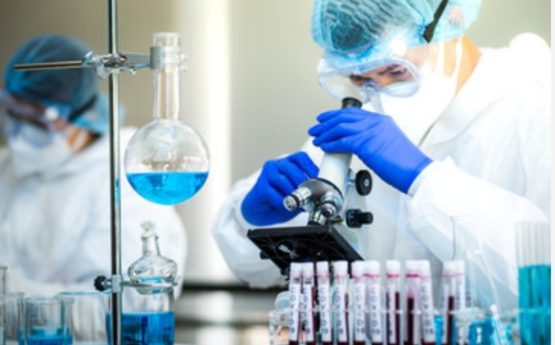CLINICAL TRIAL
CLINICAL TRIAL
Clinical Trial (True Experiment) is a kind of clinical research whose aim is to originate new ways of treatment and thus contribute to the upgrading of health and quality of life. A clinical trial is one of the forms of intervention trial which encompasses human beings as study subjects (Healthy volunteers or Patient’s) and test “safety and efficacy’’ of an innovative treatment (i.e., a medicine, a medical device, a surgical procedure or a test for diagnosing an illness, to determine other indications, to change the formulation of an existing drug,)
IN VITRO STUDIES (“Within the Glass”)
These tests conducted in a controlled environment (in the lab) outside of a living organism, usually in test tubes. Or
Studies or Trials performed on microorganisms and cells outside of their usual biological environment.
One significant disadvantage of in vitro experiment is that results gained from these experiments may not anticipate the complete and precise effects on the whole organism i.e. these experiments fail to replicate the detailed cellular conditions of an organism, predominantly a microbe.
IN VITRO PHARMACOLOGY
Study of the biological properties of drugs and pharmaceuticals, performed outside of living organisms.
IN VIVO STUDIES
These researches are conducted in an entire living organism. In vivo testing is frequently employed over in vitro because it is well suited for witnessing the overall effects of an experiment on a living organism. Animal studies and clinical trials are examples of in vivo research.
DRUG DISCOVERY
Drug development is the technique of bringing a new curative drug to the market once a principal compound has been identified through the method of drug discovery.
- TARGET IDENTIFICATION
A drug target is the definite binding site of a drug in vivo through which the drug applies its action. So, the disease mechanism is studied using cellular and genetic methods, in order to identify probable drug target.
- TARGET VALIDATION
Validates that a specific target is relevant to the disease being studied. Gene and their protein products that are highly stated in disease tissues, but have low expression in normal tissues, become obvious potential targets for therapy. Target validation can be done on a cellular level, whole animal model, molecular level.
- LEAD DISCOVERY
The lead compound is a chemical that has pharmacological/biological activity expected to be therapeutically useful but still has a suboptimal structure that needs change to fit better to the target.
- Lead identification
- Lead optimization
Once the molecule is finalized for development, it goes through the pre-clinical phase to get final approval for general use in public. Most substances fail to complete the course, as few as 1 in 10000 undergo the entire program and reach the market.
PRE – CLINICAL STUDY
In this phase research in the animal model, ex vivo experiments, in vitro experiments take place to check the safety and efficacy of new potential compounds which is supported out according to regulatory guidelines. Wide-ranging of dosage of the compounds are introduced to the cell line or animal in order to gain initial efficacy and pharmacokinetic data about the new molecule.
Animal studies comprise of;
- Toxicology studies.
- Pharmacodynamic studies.
- Pharmacokinetic studies.
The outcomes from preclinical research determine whether there is satisfactory potential for a drug to continue testing in a human clinical trial.
CLINICAL PHASE
The clinical studies test the potential treatments (drugs, devices, or biologics like vaccines) in human volunteers or patients to see whether they should be further investigated or approved for wider use in the general population. This is an integral part of the drug development process and also required by regulatory authorities before a new treatment is brought into the market.
- Phase I:
- Primarily safety studies rather than efficacy.
- 20 to 100 healthy or specific disease subjects.
- Determine pharmacokinetics and pharmacodynamic.
- Phase II:
- Few hundred patients.
- The dose can provide maximal benefit with minimal risk.
- Estimate dosage for subsequent study.
- Explore use for target identification.
- Phase III:
- Confirms efficacy.
- Estimate the safety profile.
- Establish a dose-response relationship.
- Several thousands of patients.
- Phase IV: MARKET PHASE
- The long-term study which occurs after marketing authorization is granted for the new medicinal product and the new product is placed onto the market.
- Refined dosing recommendation.
- Identification of rare ADR(Adverse Drug Reaction).
- Particular children study.
- Additional information on safety and efficacy.
Each step in the clinical research program is heavily regulated, before introducing a medicinal product in human, there is an assessment done by regulatory authorities of all the animal and in vitro studies. Every clinical trial must be permitted by the specific regulatory authorities and separate country based on summaries of the available evidence date.

